Not sure which kind of monitor to go after this year? In this article, we’ll go over the pros and cons of flat vs. curved monitors, and help guide you toward the final buying decision that best fits your needs.
Although buzz around curved screens has died down a bit since the mid-2010s, curved models still make up a sizable niche in the monitor space. They remain popular among its first and strongest supporters, gamers and designers, who benefit the most from the reduced eye strain and improved viewing angles.
Should you get a curved or flat monitor?
There are three major advantages to a curved screen versus a flat one:
- Wider perceived field of view
- Less pixel distortion at the screen edges
- Added immersion due to the wrap-around effect
A wider perceived field of view means the curve allows for effectively more screen real estate in the same physical space. That’s why many curved screens allow for ultrawide aspect ratios while taking up the same space on your desk as a 16:9 flat monitor.
Less pixel distortion at the screen edges also allows for consistent brightness and clarity across the entire screen. But how does a curve lead to less pixel distortion?
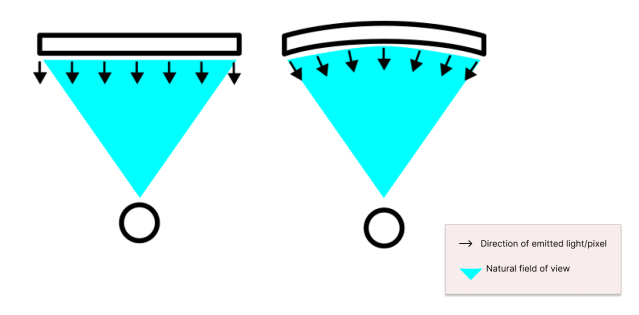
As the image above shows, a flat monitor emits every pixel directly forward. That means your eye views pixels farther away from the center of the screen at a sharper angle (instead of straight on, as would be ideal). This naturally causes a loss in pixel clarity, as you don’t receive the pixels around the screen’s edge at the ideal angles. Since the backlight also emits light directly forward, the pixels around the edge lose brightness, too.
Meanwhile, curved screens are designed to match the natural curvature of your eye, so the pixels always hit your eyes straight-on, no matter what area of the screen you’re looking at. This ensures consistent brightness and clarity throughout the display.
The wrap-around effect is the name for the sensation of being surrounded by the screen’s curve, making films and video games feel more immersive. Even a slight curve can induce this effect.
Overall, here are a few tips that will help you make a final buying decision:
- Prioritize other specs first (e.g. panel type, max resolution, refresh rate). Your last consideration should be whether or not you have extra room in your budget for a curved screen.
- How many hours a day do you sit in front of your screen? If you spend several hours a day in front of your monitor, you benefit the most from the reduced eye strain a curved screen offers.
- How often do you use the screen with other people? Curved screens follow the natural curvature of the eye, providing an ideal viewing experience for one user. It’s not as great when you have multiple viewers. If you often hold watch parties or do lots of couch co-op, a flat monitors provides more consistent viewing angles for everyone involved.
Curved vs. Flat Monitors: Full breakdown
The following is a breakdown of the pros and cons of each monitor type:
| Feature | Flat Monitors | Curved Monitors |
|---|---|---|
| Pros | • Cheaper • More consistent viewing experience for multiple viewers • Easy mounting • More options available on the market | • More screen real estate in less space • Wrap-around effect matches the natural curvature of the human eye • Larger field of view • Eliminates distortion at the screen edges • More ultra-wide options • Reduce eye strain |
| Cons | • Pixel distortion near screen edges • Smaller potential field of view • Prone to glare and reflections | • Hard to find 4K options • Best for a single user at a specific angle and distance • Harder to mount on a wall • More expensive |
Our top picks for curved monitors
Dell S3422DWG
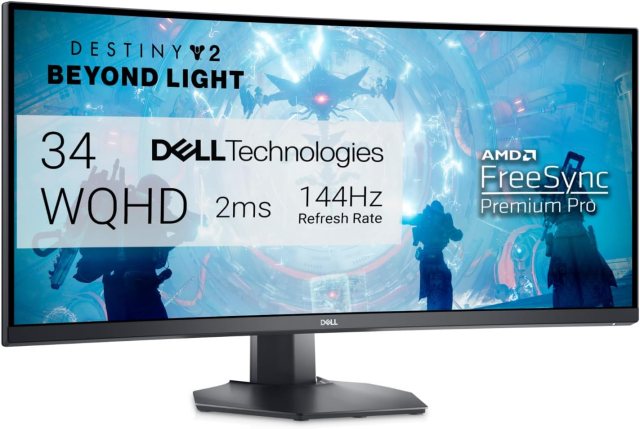
| Key specs | • 34-inch curved IPS display • 144Hz refresh rate • 21:9 aspect ratio • 1ms response time |
| Pros | • Great price-to-quality value • Ultra-wide aspect ratio • Affordable • Multiple screen profiles for various use cases • Brightness Uniformity Compensation mode provides uniform brightness across the screen similar to an OLED screen |
| Cons | • Brightness Uniformity Compensation only works with sRGB and DCI-P3 color profiles • Color accuracy could be better • No HDMI 2.1 support |
The Dell S3422DWG is an impressive hybrid gaming and professional monitor for those who want a premium curved monitor without paying an arm and a leg. Despite only having an IPS screen, it delivers image quality that approaches that of OLED displays. Variable refresh rate performance is excellent, and the monitor comes with a selection of the profiles for a various use cases, like a Super Fast profile which improves pixel response times for competitive gaming.
IPS screens tend to have brightness uniformity issues, especially around the screen edges, but Dell has a great solution called Brightness Uniformity Compensation. Turning this on provides uniform brightness across the screen that’s comparable to an OLED, easily making this the best curved IPS screen at this price range.
Samsung Odyssey G93SC
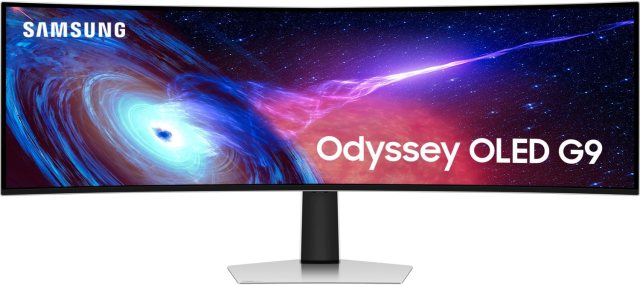
| Key specs | • 34-inch curved OLED display • 32:9 ultra-wide aspect ratio • 240Hz refresh rate • 0.03ms gray-to-gray response time |
| Pros | • Great color accuracy • Excellent contrast with deep blacks • Ultra-wide aspect ratio great for video editing and gaming • Support for DisplayPort and HDMI 2.1 |
| Cons | • Expensive |
For curved screens, you won’t find a widely available screen that beats the Samsung Odyssey G85SB. The asking price is large, but you get what pay for: a high-end monitor with rich colors, deep blacks, professional-grade color accuracy, and virtually no ghosting or smearing. The matte screen is surprisingly sharp and the OLED display has decent brightness, though it struggles to maintain contrast in very bright environments.
The most common complaint is that the Samsung software is made to enhance a TV watching experience, but is basically useless for work or gaming. It also requires a Samsung account during setup, which is annoying. Luckily, the screen is perfectly usable without the app, so it doesn’t take at all take away from what is, essentially, one of the best curved screens available.
Dell Alienware AW3423DW
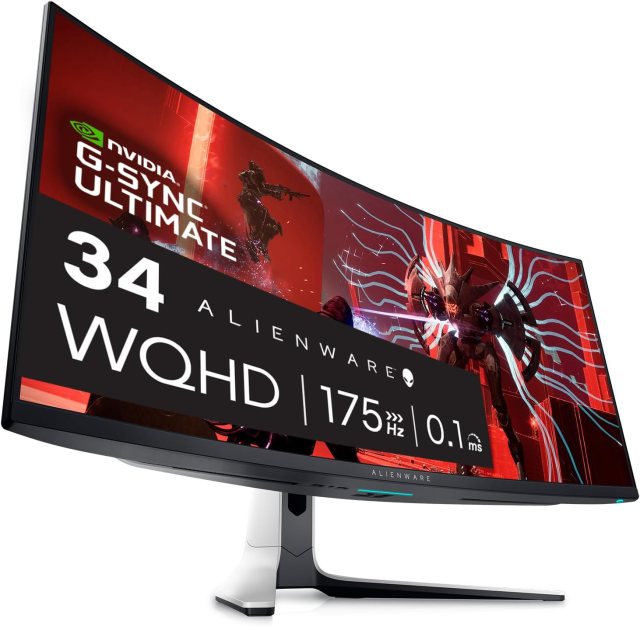
| Key specs | • 34-inch curved QD-OLED display • 175Hz refresh rate • 21:9 ultra-wide |
| Pros | • Fast response time • Ultra-wide aspect ratio • Great contrast and deep blacks • Creator Mode for improved color accuracy |
| Cons | • Prone to burn-in (inherent quality of QD-OLED screens) |
The Dell Alienware AW3423DW is one of the best QD-OLED monitors available, with excellent color accuracy and gamma calibration. For gamers, the curved screen offers an immersive experience, providing stunning visuals with deep blacks and bright, punchy colors. Unfortunately, it doesn’t support true HDMI 2.1, so console gamers will need a DisplayPort adaptor to get the most out of their gaming machines, though PC gamers will enjoy the full 240Hz refresh rate through DisplayPort.
While the colors aren’t quite as precise as the Odyssey above, for everyday use and gaming, the Dell Alienware AW3423DW remains a top-tier choice.
Our top picks for flat monitors
Samsung Odyssey G8/G80SD S32DG80
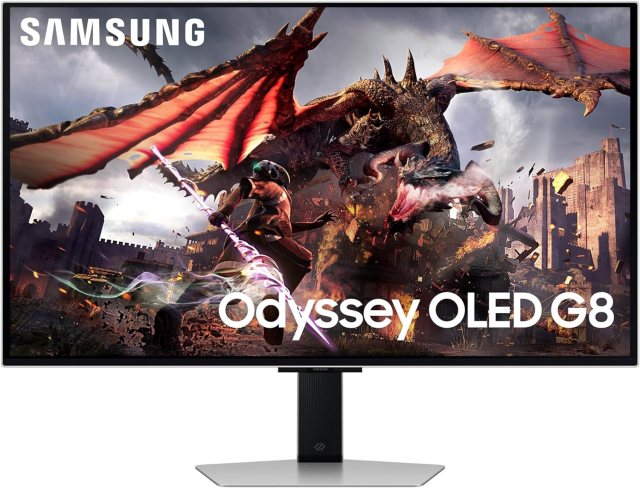
| Key specs | • 32-inch OLED display • 240Hz refresh rate • 0.03ms response time |
| Pros | • One of the best OLED displays available • Incredibly deep blacks and near-infinite contrast ratio • Vibrant colors, sharp image, top-of-the-line color accuracy out of the box |
| Cons | • Expensive • Samsung software is useless for gaming and productivity |
We’ve talked about how great the Samsung Odyssey G8/G80SD S32DG80 is for console gaming, but it’s just as good a general-purpose flat monitor. Out of the box, the display is vibrant, with deep blacks and excellent mid-tones, which is perfect for both gaming and productivity. The color accuracy is ideal for creatives, too, with 100 percent sRGB and 99 percent DCI-P3 coverage. Gaming on this monitor is smooth at 240Hz, and the screen size enhances immersion.
As with the Odyssey G85SB above, the software is mostly bloat if you’re not going to be using the screen primarily for TV viewing. Despite this, the display quality and performance are exceptional and well worth the hefty asking price.
ASUS ROG Swift PG32UCDP
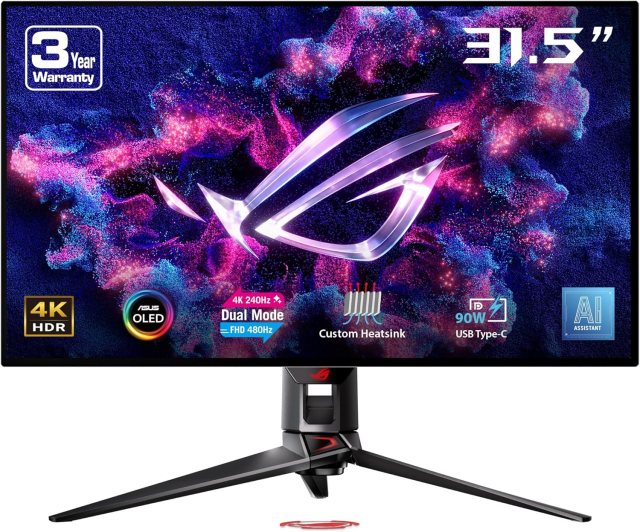
| Key specs | • 32-inch 4K OLED display • 240Hz refresh rate (480Hz @ 1080p) • 0.03ms response time • 99% DCI-P3 |
| Pros | • USB-C ports delivering up to 90 W of power • Beautiful QD-OLED display with deep blacks and great contrast • 1080p @ 480 Hz “performance mode” for competitive gaming |
| Cons | • Colors aren’t as vivid as the Samsung Odyssey OLED G8/G80SD • Prone to burn-in |
The ASUS ROG Swift OLED PG32UCDP is a high-end 32-inch 4K gaming monitor designed for gamers seeking top performance. You get exceptional responsiveness thanks to a 240Hz refresh rate at 4K resolution, with the option to make controls even snappier by activating the Frame Boost mode, which runs at 480Hz at 1080p.
The Swift stands out for its productivity features, like a USB-C port with up to 90W power delivery and built-in KVM switch that allows easy switching between multiple computers. The monitor also includes features designed to prevent OLED burn-in, such as a custom heatsink and OLED Care settings, ensuring long-term durability.
With the PG32UCDP, you get vivid colors, bright highlights, and incredibly fast response times, making for a powerful monitor for gaming and work.
Dell G3223Q
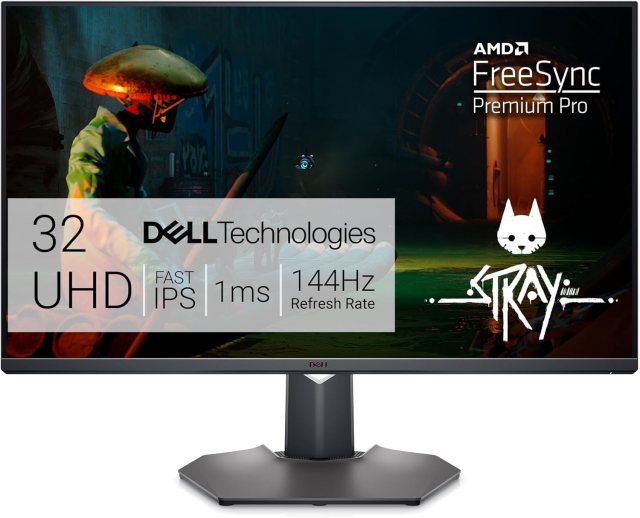
| Key specs | • 32-inc 4K IPS display • 144Hz refresh rate • 1ms response time |
| What we like about it | • Great value for your money • HDMI 2.1 support • Brightness Uniformity Compensation mode provides uniform brightness across the screen similar to an OLED screen |
| What we don’t like about it | • Brightness Uniformity Compensation mode doesn’t work in the default color profile • “Only” DCI-P3 95% |
The Dell G3223Q is an excellent mid-range gaming monitor with a 4K screen that runs at an impressive 144Hz refresh rate. The quick response time of 1ms makes it great for competitive games where quick reflexes and instant feedback is important.
It produces bright and vibrant images, with great contrast ratio and brightness uniformity for an IPS display. Again, Dell’s Brightness Uniformity Compensation mode helps hide a lot of the imperfections inherent to IPS panels, providing uniform screen brightness approaching that of far more expensive OLEDs. No, you don’t get the same deep blacks, but the general consumer hardly needs that kind of contrast ratio.
DCI-P3 95 percent coverage isn’t perfect color accuracy, but it’s nothing to scoff at. Similarly priced monitors with better color accuracy don’t have the same range of features or quick response time of the G3223Q.
How we created both lists of monitors
In our search for the best flat and curved monitors, we collected data from user reviews, community forums, and benchmark results. The result is two lists of curved and flat monitors that we’re certain anyone in the market for a quality monitor will appreciate. Even if, for whatever reason, you prefer another screen, we’re confident that these lists serve as an excellent starting point for your deep dive into the world of monitors.
Key takeaways
Curved monitors offer clear benefits over flat monitors, including curved screens allowing for a wider perceived field of view, less edge pixel distortion, and more uniform brightness and clarity.
Is it worth the added premium? After all, a curved monitor can be several hundred dollars more expensive than a flat monitor of similar quality. If you’re someone who spends a lot of time working or gaming in front of a monitor, the added comfort and immersion might justify the extra cost, but if you hold watch parties or need a screen for couch co-op (or don’t have that kind of extra cash to spare), a flat monitor should be your pick.


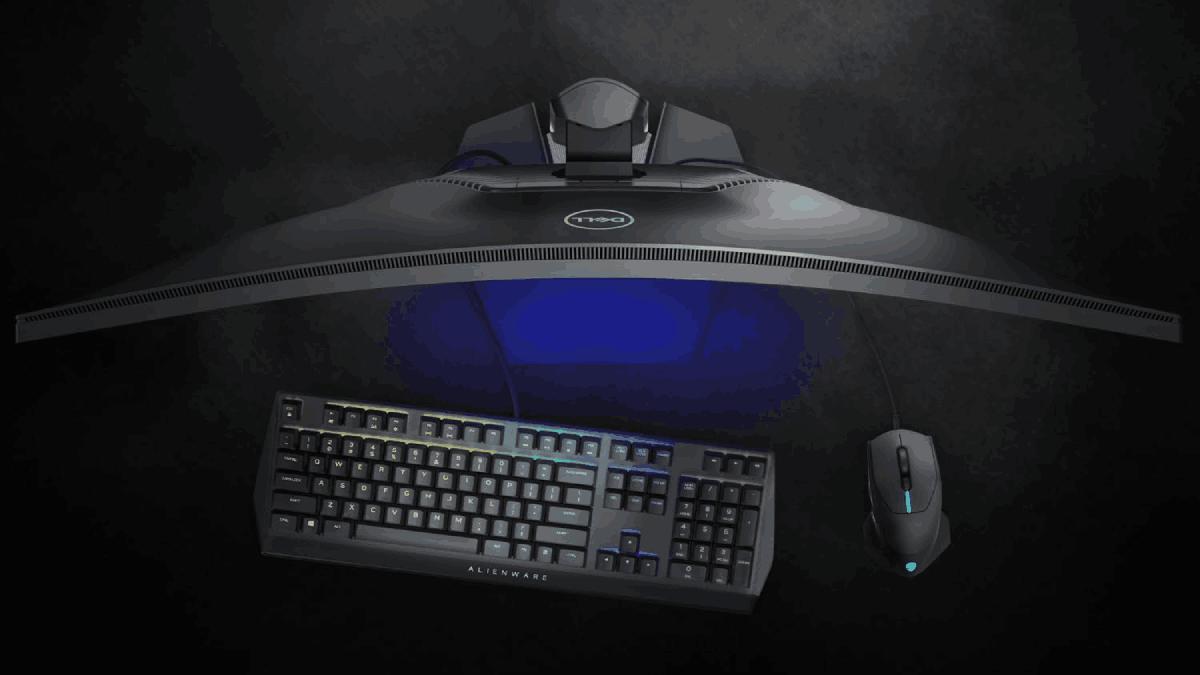



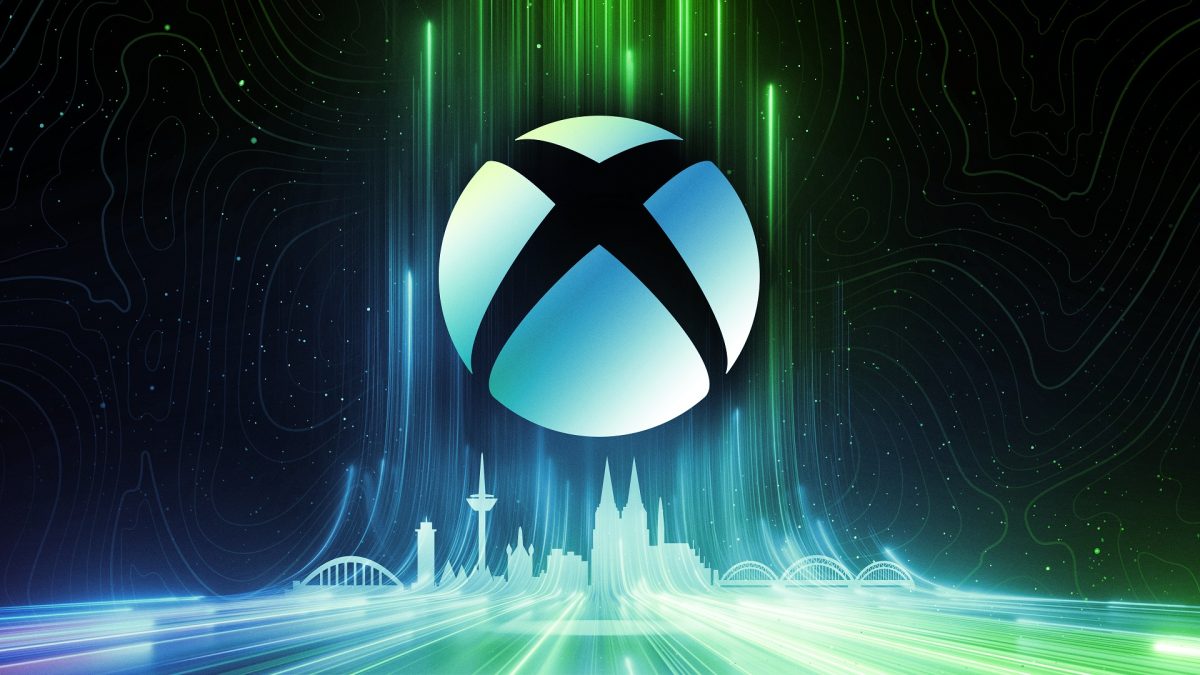

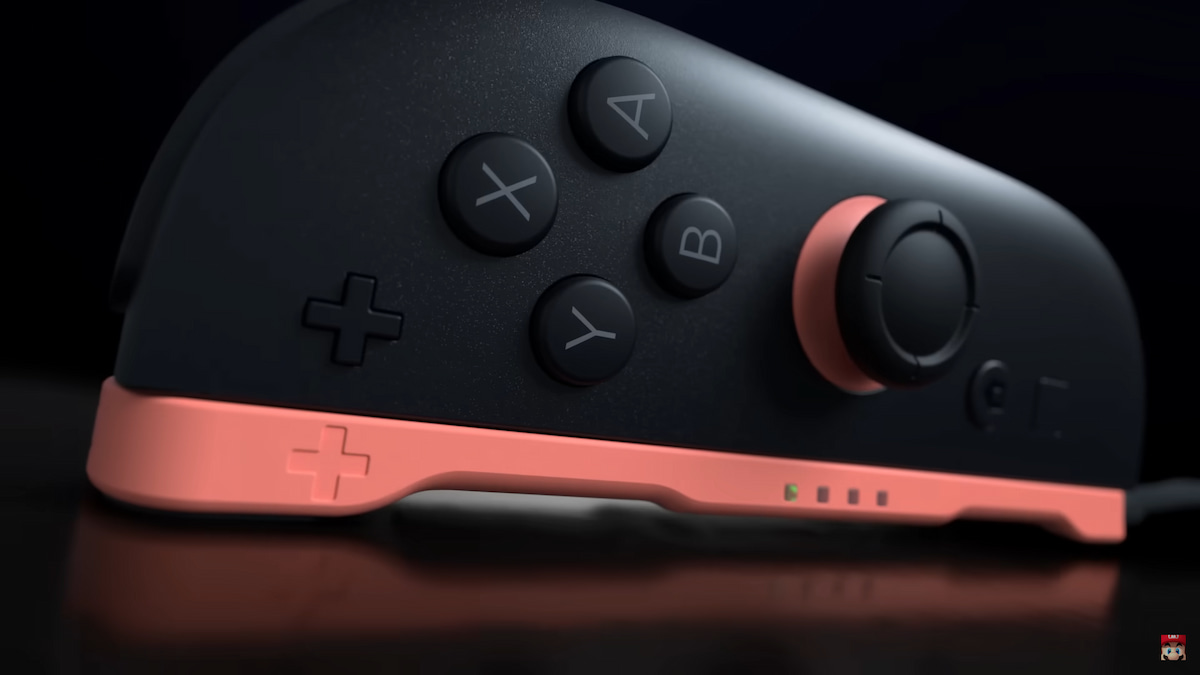
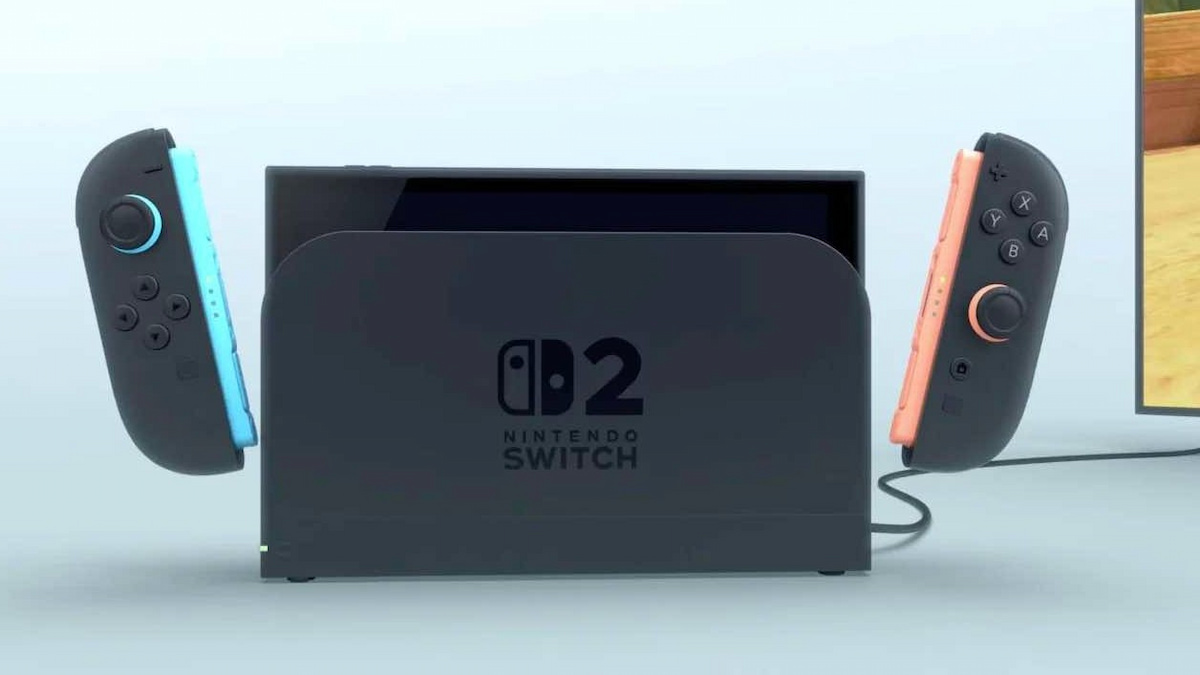
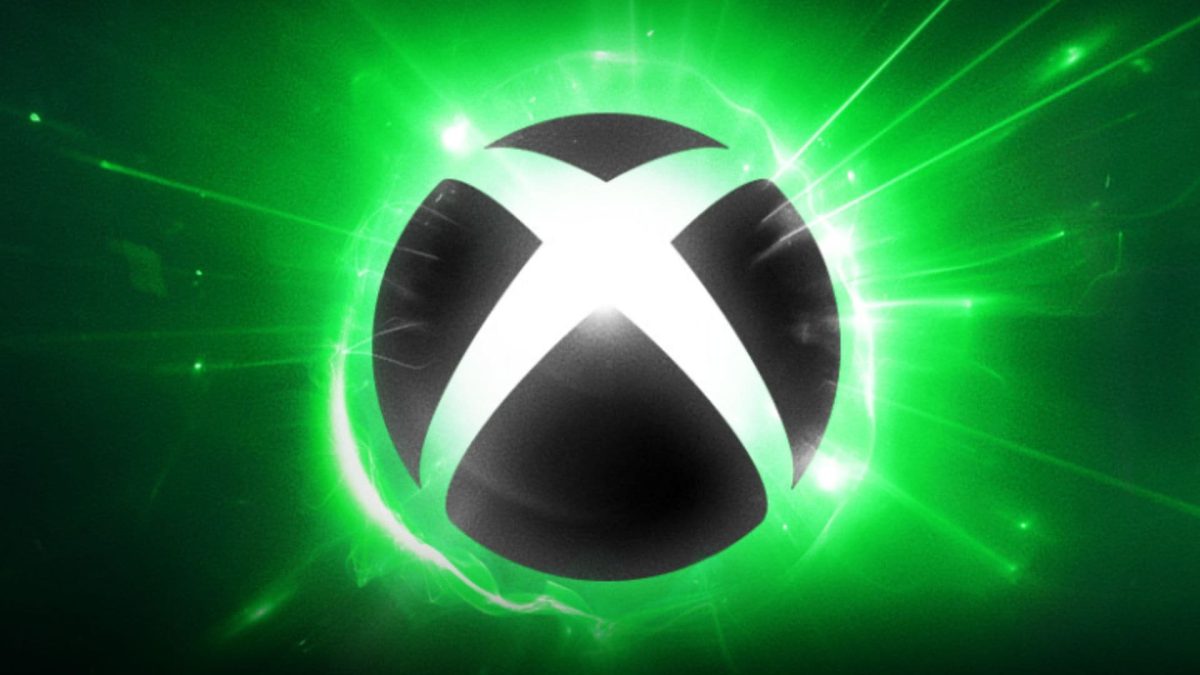
Published: Oct 29, 2024 04:28 pm